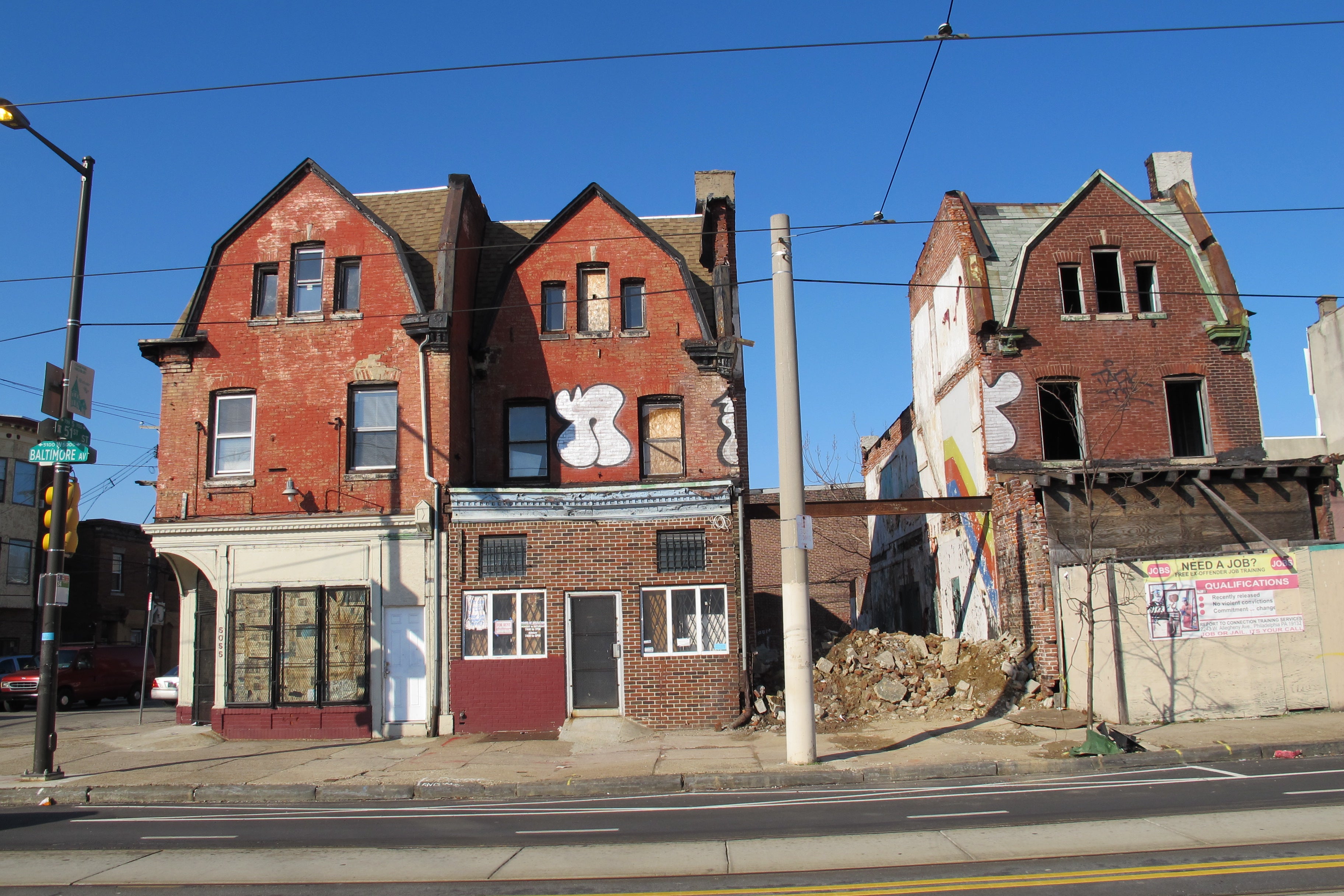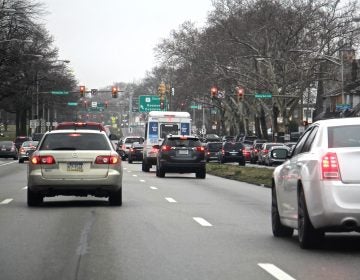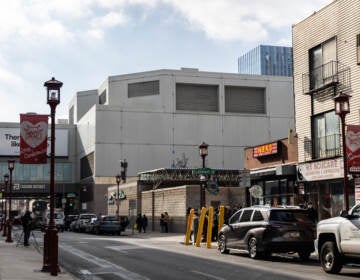March 11: Ravaged by Neglect | redevelopment in Tioga/Nicetown/Allegheny West | of skylines and streets | Fishtown’s disappeared public art

Welcome to the working week, Streeters. It’s going to be about 60˚ today, so we hope you get out and about today to take in this spring-like day. And should you snap some pictures of spring springing up in your corner of the city while you’re out, share them with our Flickr group. Here’s what’s making news this Monday morning:
If you read nothing else this week, we suggest reading Patrick Kerkstra’s three-part PlanPhilly/Inquirer series Ravaged by Neglect, exploring the causes and costs of the city’s tax delinquency crisis. It is a must read.
- Part One dug into the overwhelming reach of delinquency, from the deadbeat property owners, the effects on the neighborhoods they choose to forget, the cost of missed revenue, and spotty enforcement by the city.
- Part Two focuses on the deadbeats. So who’s to blame? Investors, speculators, slumlords playing property Powerball are by far the biggest group of tax-delinquent owners, not low-income owner-occupants. Alongside this piece Jared Brey and Ashley Hahn traced stories of blight and delinquency to blocks in Cobbs Creek, Southwest Center City, and Hartranft.
- Part Three (coming tomorrow) explores how the city’s failings enable these deadbeats and considers possible solutions.
Over the last decade the redevelopment of huge former industrial sites in Tioga, Nicetown, and Allegheny West could signal a turnaround that give community activists hope, reports the Daily News. From Temple’s reuse of former Budd Co. buildings to the ongoing conversion of Tasty Baking’s buildings, and now the Stanley Blacker suit factory’s reinvention as a senior housing and care campus. “We were just not willing to accept the only outcome as vacancy, with no jobs or no opportunities to grow,” said Ronald E. Hinton Jr., president of the Allegheny West Foundation.
Ken Finkel muses on the meaning of a city street, thinking back to a conversation with Lou Kahn walking along 10th Street. Kahn offered an appreciation of chimneys forming a mini-skyline above the one-story Laundromat at 10th and Spruce, engaged in a lively dance, and decried the damage that cars did to the communal aspect of city streets. Finkel concludes: “A living city needs both: a dance above and below. It’s about life, movement, form and synchronicity up there, but we also need it down here. That is what a city should look like.” If not, we have failed.
On the Art Blog Roman Blazic traces the artistic expressions that have disappeared from Fishtown’s streets in photographs.
The Buzz is Eyes on the Street’s morning news digest. Have a tip? Send it along.
WHYY is your source for fact-based, in-depth journalism and information. As a nonprofit organization, we rely on financial support from readers like you. Please give today.







